They may be known as “America’s sweethearts,” but beneath the glossy veneer, the Dallas Cowboys Cheerleaders (DCC) is an organisation marred by scandal.
The NFL cheer squad is one of the most famous dance teams in the world, with its members renowned for their immaculate uniforms, bouncy hair, glowy makeup and impeccable athleticism. Thanks to a meticulously-designed PR strategy, executed across several decades, the DCC has positioned itself as a brand bound to wholesome, traditional values. But despite the wholesome image long projected by the DCC, over the years, a handful of incidents have cut through the haze to reveal a dirtier side to the storied institution.
Some of DCC’s foibles were referenced in a recent Netflix docuseries, titled America’s Sweethearts. From underscoring the tight body and beauty standards cheerleaders are subjected to, to lifting the lid on DCC’s handling of alleged sexual assaults; the seven-part series stirred up plenty of controversy. However, there are a handful of scandals the series neglected to mention. Scroll on to discover what they are.
A Senior Executive Is Accused Of Filming Cheerleaders In The DCC Locker Room

The Dallas Cowboys organisation confidentially paid a settlement of US$2.4 million to four of its former cheerleaders, who accused a senior team executive of voyeurism in their locker room.
Per ESPN, one cheerleader claimed she saw Richard Dalrymple, the team’s senior VP for public relations and communications, standing behind a partial wall in their locker room during a 2015 event. She alleged that Dalrymple had his phone extended, as if filming them, while they got undressed. She also claimed that he used his security pass to gain access to the locker room through a back door.
The four women involved were reportedly paid almost US$400,000 each following the incident. Further, a signed copy of the May 2016 settlement features nondisclosure agreement in which the cheerleaders, three of their spouses and team officials agreed to never speak publicly about the allegations, according ESPN.
In response to the scandal, which broke years after the alleged incident, in 2022, Cowboys spokesperson Jim Wilkinson told NBC: “The organisation took these allegations extremely seriously and moved immediately to thoroughly investigate this matter. The investigation was handled consistent with best legal and HR practices and the investigation found no evidence of wrongdoing.”
“If any wrongdoing had been found Rich would have been terminated immediately. The cheerleaders are a vital part of the Dallas Cowboys family, and in terms of the settlement, the organisation wanted to go above and beyond to ensure the cheerleaders knew that their allegations had been taken extremely seriously, and immediately and thoroughly investigated. Everyone involved felt just terrible about this unfortunate incident.”
Dalrymple denies the allegations.
Danny White Kisses A Cheerleader
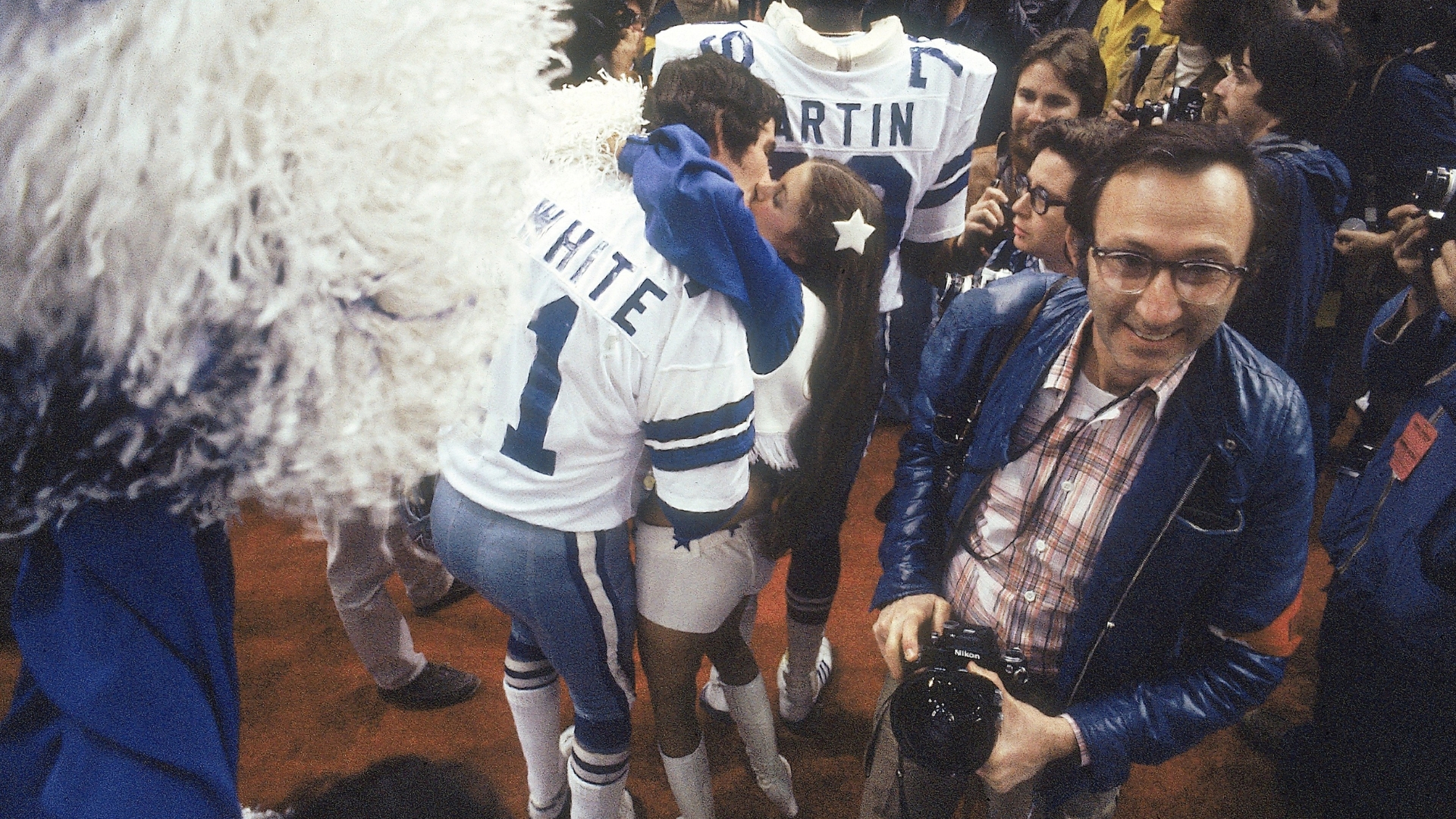
In 2021, Sarah Hepola—who hosts America’s Girls, a podcast about the DCC—came across this photograph and wrote about it in a Texas Monthly article titled The Photo the Dallas Cowboys Never Wanted the Public to See.
The image, taken by a Sports Illustrated photographer at the 1978 Super Bowl, shows backup Quarterback, Danny White kissing a then-unidentified cheerleader. Since at least 1972, the organisation had imposed a strict rule that prohibited DCC from fraternising with players.
Hepola managed to identify the cheerleader as Cynde Lewis, who was happy to chat about the snap.
While her and White were both married at the time of the game, Lewis remembers the kiss as innocent. “It looks worse than it is,” she told Hepola. “It looks like we’re tonguing! It was just a little peck.”
Despite the image being prime tabloid fodder, it would take more than two decades for it to even be printed.
Lewis recalls telling Suzanne Mitchell, then the director of the DCC, that White had kissed her and that there had been a lot of photos taken. Hepola writes, “my guess would be that someone high in the Cowboys organisation made sure that photo didn’t run. Double-triple sure. Whatever America’s Team represented—apple pie, shining virtue, triumph over circumstance—it wasn’t this. A married football player kissing a married cheerleader.”
The image eventually showed up in People magazine in the early 2000s—by which point Lewis and White were both in their 40s (and still married to their respective spouses).
Allegations Of Wage Theft
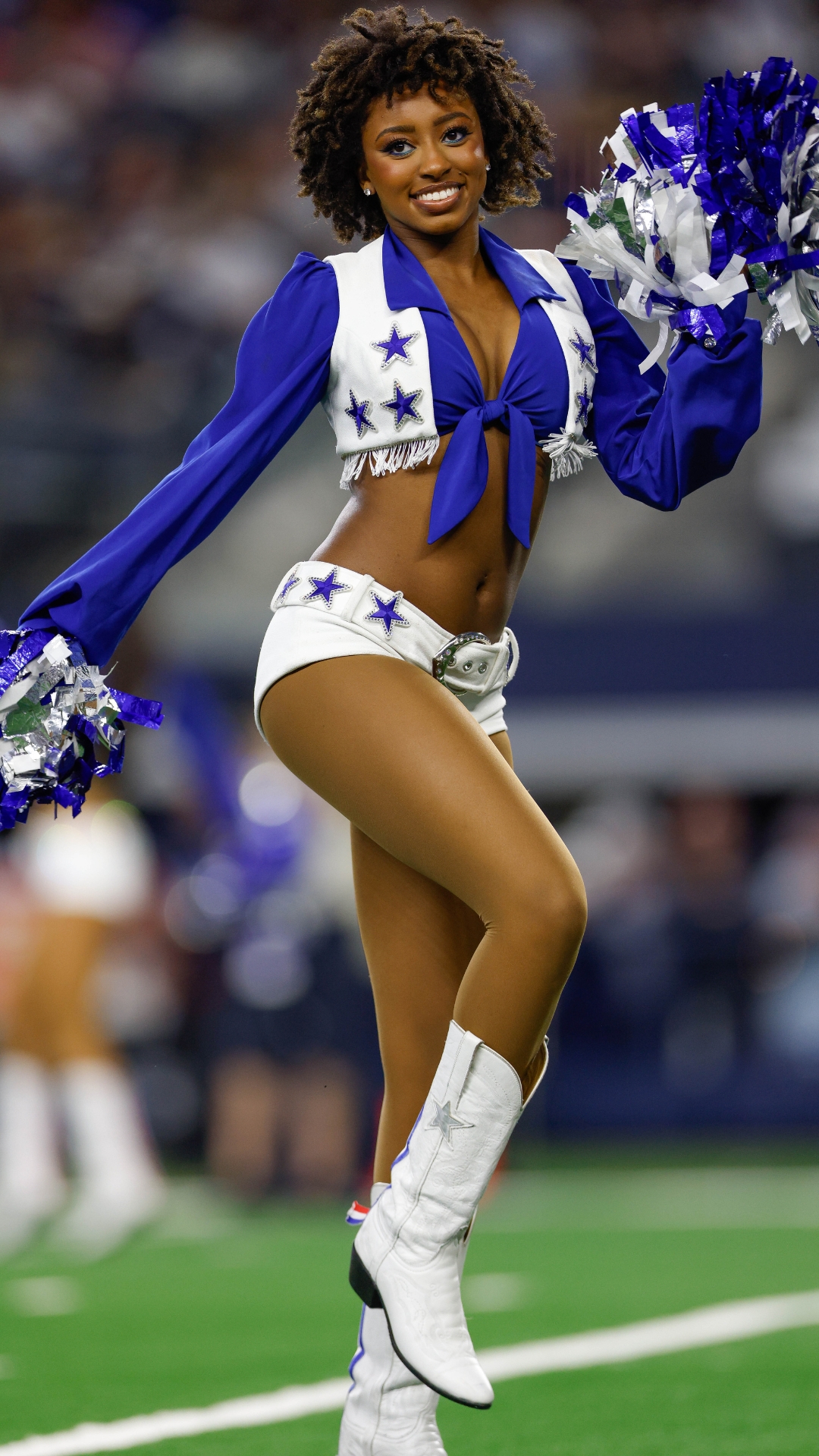
How much the Dallas Cowboys Cheerleaders are paid has long been a confusing and controversial topic.
Reports of their salaries range from nothing—with former DCC from the ’70s and ’80s telling Netflix they essentially cheered for free—to more recent estimates putting their annual income at anywhere between US$10,000 and US$75,000. In the first episode of America’s Sweethearts, DCC alum Kat compares her salary to that of “a Chick-fil-A worker who works full time.”
The issue of compensation came to a head in 2018, when former DCC, Erica Wilkins sued the Dallas Cowboys. In a lawsuit, Wilkins alleged she was not paid for all the hours she worked, which included practices, trainings rehearsals and filming for the now-defunct reality show Dallas Cowboys Cheerleaders: Making the Team. Wilkins also claimed she was not paid overtime when she worked more than 40 hours per week.
Per the Dallas Observer, Wilkins alleged that she earned US$5,817.99 in 2014, US$12,381.09 in 2015, US$16,516.01 in 2016 and approximately US $8,424.66 in 2017. She also claimed that the team’s mascot, Rowdy, was paid a US$65,000 salary.
Wilkins told the New York Post at the time that, while she understood how covetable the role was, “at the end of the day, prestige doesn’t pay my rent. I can’t walk down to my leasing office and hand them my uniform for the month.”
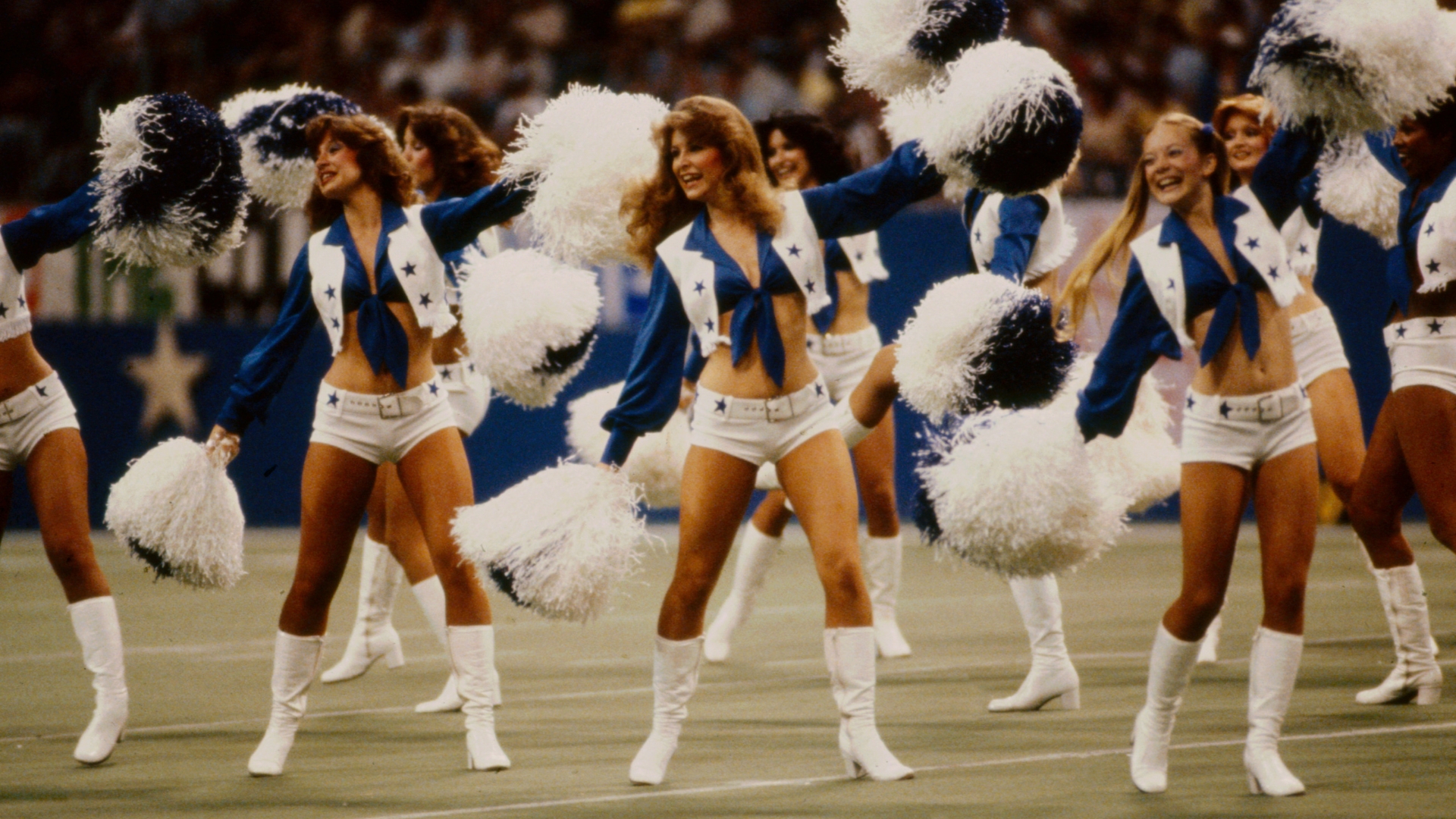
Conversations around pay have continued since—especially in light of the Netflix series, in which several women are shown to have full-time jobs on top of being a DCC.
Charlotte Jones, the Dallas Cowboys chief brand officer (and daughter of owner, Jerry Jones) did comment on the controversy in America’s Sweethearts. She tells the camera, “There’s a lot of cynicism around pay for NFL cheerleaders—as it should be. They’re not paid a lot. But the facts are, they actually don’t come here for the money. They come here for something that’s actually bigger than that to them.”
Unsurprisingly, this left a sour taste in some viewers’ mouths.
Management Is Called Out For The Dallas Cowboys Cheerleaders’ Narrow Beauty Standards
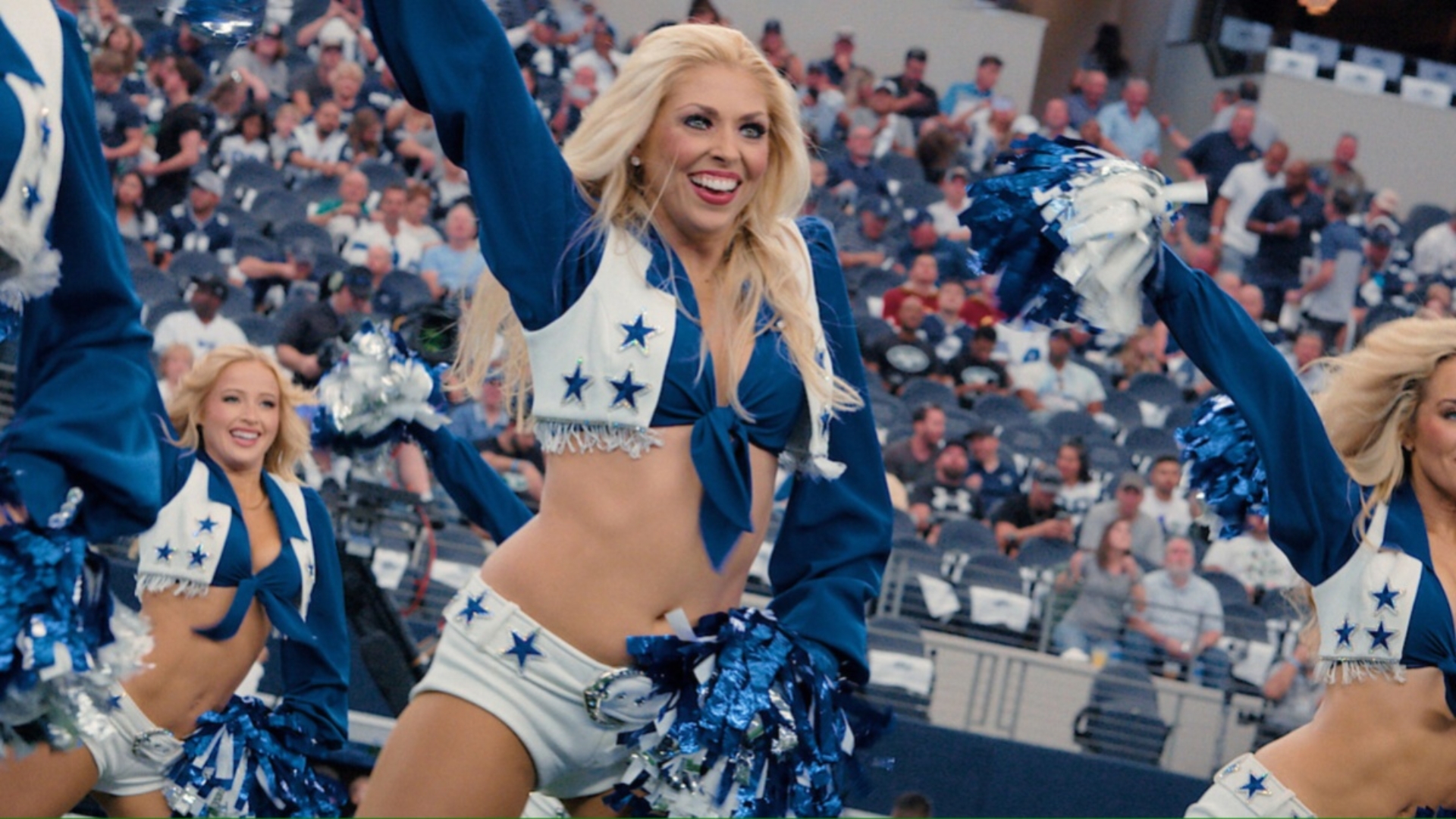
America’s Sweethearts is not the first time cameras have gone behind the scenes at DCC headquarters.
CMT’s Dallas Cowboys Cheerleaders: Making The Team was a reality show that aired from 2006 until 2021, and followed hopefuls throughout the DCC audition process. DCC big-wigs found themselves in hot water several times throughout the show’s run, largely thanks to their vocal criticism of dancer’s bodies and weight. In older episodes of the program, director Kelli Finglass and choreographer Judy Trammell were frequently filmed picking apart the builds of new and veteran cheerleaders alike.
Strict ideas of how the dancers should look predated Finglass’ takeover as director in 1991, too. A copy of a list of rules written by her predecessor, Suzanne Mitchell, features in the 2018 documentary Daughters of the Sexual Revolution: The Untold Story Of the Dallas Cowboys Cheerleaders. It explicitly states, “cheerleaders gaining weight are dropped from the roster.”
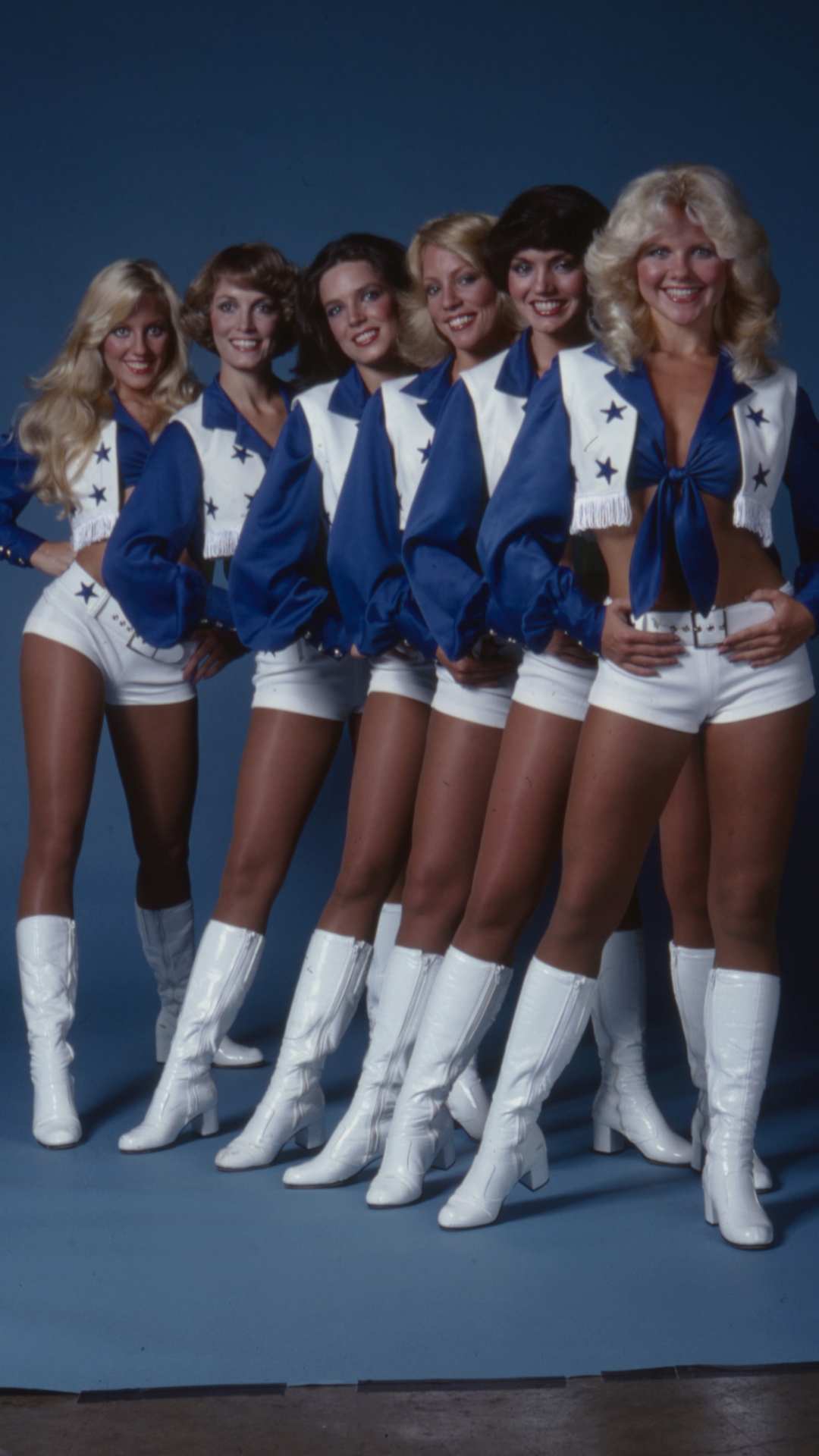
In 2018, former DCC Toni Washington told The New York Times, “Your shorts were custom-fitted to you, and they’d always say, ‘We’ll take it up, but we won’t let it out.'”
This is not a notion that has changed with time, either. In the Netflix docuseries, a veteran cheerleader explains, “You don’t get a new uniform. Once you’re fitted for that uniform, that size is the size that you get. You don’t get to go up. If you go up, they’re like, ‘Why does this not fit you?’”
Critique of the DCC’s beauty ideals has been persistent throughout its history, spawning countless op-eds, calls for change and discussions on social media. However, minimal progress appears to have been made.
Related:
- Striking Vintage Photos Of The Dallas Cowboys Cheerleading Squad
- The Strict And Surprising Rules Dallas Cowboys Cheerleaders Have To Abide By
- How Much Money Do Dallas Cowboys Cheerleaders Actually Make?
This article originally appeared on Marie Claire Australia and is republished here with permission.







